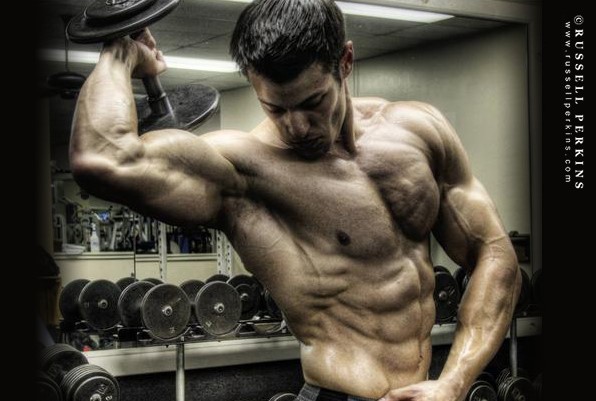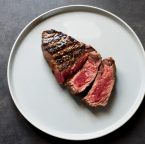There was a time when everyone assumed all fats were bad for you.
Now, that trend has gone and been replaced with a new one.
It seems that carbs have become the enemy of all weight loss programs, from Paleo to Keto and everything in between.
But carbohydrates, like calories, are an essential part of a well-balanced diet. You can’t truly eliminate it from your intake, especially if you’re trying to burn fat or build muscle.
The solution? A low-high combination of carb intake, known as carb cycling. It won’t starve you, and is actually very good for those who want to build lean muscle and burn fat at the same time.
Let’s take a closer look at carb cycling and how it can be used in conjunction with other programs.
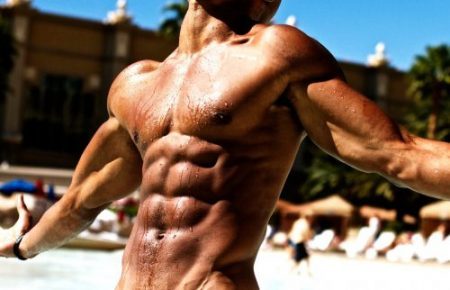
What is Carb Cycling?
Though it sounds like a Zumba workout, carb cycling is all about following a regimen where you alternate between low- and high-carb meal plans.
The ‘cycle’ in the name refers to days where you can consume lots of carbs (yum!) and days where you eat as little carbs as possible. The program has been around for quite some time now, and it’s mainly utilized by people who want to lose fat and build muscle at the same time.
Health experts say that consuming carbs is bad for you, but that’s not entirely true.
Sure, eating carbohydrates means you’re getting the glucose that cause insulin production the moment it enters the bloodstream, and we know that insulin plays a role in the formation of fat.
But the truth is, carbs do more than just that. Carbs are an essential nutrient that provides instant energy your cells will need to function throughout the day. Lack of carbs means your metabolism slows down, your stress hormones elevate and the hormones responsible for building muscle will become impaired.
In a nutshell, no carbs will mean you’ll be going against your plan of losing weight and building muscle. Carbs are important for physical performance and building a lean physique, but there’s also a thing called ‘Too Much of Anything is Bad For You’. Therefore, your best bet will be to ‘cycle’ it, or take high carbs when you need a boost in the gym, and lower the amount during resting days to stop fat formation.
Let’s break the concept into simpler terms.
People who follow carb cycling take in high amounts of carbohydrates to maximize its energy and muscle-building characteristics and abstain from it when they don’t need it.
It’s a customized regimen that will depend on your lifestyle and needs. Adjusting can be done daily, weekly or monthly as per your goal. Most people start out with daily adjustments, for instance, a high-carb meal plan during gym days e.g., Monday and Friday and low-carb days throughout, then go from there. Planning high- and low-carbs on a weekly basis requires more forethought and planning and is reserved for those who are training, e.g., athletes and bodybuilders.
Carb cycling has a set of rules you can follow:
Workout Days
Carbohydrates work best when your day involves doing workout, e.g., strength training, weightlifting, running, etc.
Starch-based carbs will be your BFF here. Supplement with protein, healthy fats and the requisite fruits and veggies and you’ll feel like Superman on a rampage!
The carbs will take care of your energy needs, while protein will do what it does best- build up lean muscles.
Cardio Days
Cardio equals less carb intake but it doesn’t mean that the nutrient is off the menu. Moderate should be fine, and in this case, you will need veggies, fats and protein.
Rest Days
Carbs should take a back seat here as you won’t be using it as much when you’re active. Less carbs mean your body naturally turns to fat as its primary source of energy.
Carb intake should be tailored according to these factors as well:
The rule is easy- eat more carbs when training, then lower consumption when you’re resting. This covers any type of activity, whether you’re pumping iron, adding bulk, preparing for a sporting event and so on. If your intent is to lose weight, then you can plan out ‘carb sessions’ as a sort of cheat day so your body won’t crash due to lack of the nutrient.
You can also scale the amount of carb intake depending on the type and intensity of training. The longer and the more difficult the training regimen, the more energy you’ll need to sustain it.
Carb cycling can be customized according to body fat percentage. The more body fat you have, the less you need to do carb days, which will switch as you get lighter.

Does Carb Cycling Work?
Carb cycling does work, especially if you need to burn fat without sacrificing essential nutrients and energy your body needs.
You’ll be able to maintain peak physical performance and torch unwanted fat at the same time.
But if you want to really succeed in your weight loss goals, then we’d recommend combining carb cycling with a caloric deficit program. It’s simple, really. Eat less than what your body naturally burns and you’ll be slimmer in no time.
Carbs and protein form a one-two punch that can help you gain more muscle. It’s an excellent idea to incorporate protein during high-carb days so you can gain the benefits of muscle growth and more energy to burn when you need it most.
Of course, you can choose to consume healthy fats and protein while in bulking or cutting phase, but the magic of carb cycling is that you can add days of high carb intake just so that you won’t feel the side effects of a low carb diet.
Carb cycling shines in instances where you need energy for long periods of time. Endurance athletes love this kind of diet because it allows them to push further. Glucose in carbs give you essential fuel to take your game further and overcome your personal workout plateaus.
You’re probably tired of hearing how carb cycling can give you more energy and how it can supplement a weight loss program, but its benefits don’t stop there!
With carb cycling, you’ll be able to stick to your diet better because your body will be getting everything it needs, and therefore you won’t experience crashes, binges or emotional overeating. Your insulin, hormones and cholesterol levels will pan out as well. Plus, you get all the energy needed to complete your day.
Low-carb days, otherwise known as ‘dog days’ are when you’re not doing much and just being a couch potato. Here, your body maximizes its internal fat-burning mechanisms by seeing that there are not many carbs to chew on, and instead turns on your fat reserves. A nifty trick is to add more veggies and protein so you become fuller and are satiated for a longer time.
So, what does a low-carb day look like? Strictly speaking, it’s somewhere in the range of 50 grams or below. You get your caloric needs from healthy fat and protein, and recommended foods include nuts, lean protein and non-starchy vegetables like eggplant, cauliflower, leafy greens, and mushrooms. If you’re still hungry, add more non-starchy veggies in the mix.
High carb days don’t necessarily mean you eat your body weight in this particular nutrient. The right amount is somewhere around 50 percent of total caloric intake. Keep an eye out on your macronutrients- these should follow the dietary guideline standards set by the USDA. Your checklist may include starchy vegetables such as corn, legumes, butternut squash and potatoes, beans, fruit, and whole grains. If possible, stay away from gluten and dairy, sugary treats, processed or instant food, and alcohol.
Low carb days are there for a reason. They force you to consume as little calories as possible so you won’t be storing them as fat later on. Less starchy foods and more of the good stuff, e.g., vegetables, protein and the right amount of fruit servings will almost assure a decrease in weight. Swap out carbs in favor of veggies and lean protein and you’ll find yourself on track to your target physique.
You probably won’t see the desired effect if you just adopt carb cycling without any form of exercise. So, get off your feet and take part in an activity you love doing! Cardio and HIIT workouts are great during low-carb days because they tell your body to start consuming fat for energy. Then, do some strength training on high-carb days to build up muscle and lean mass more effectively.
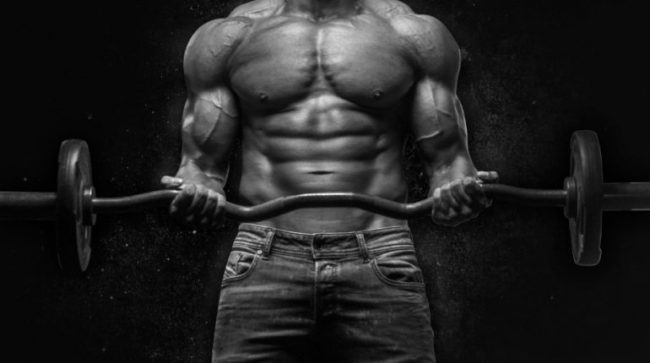
Carb Cycling with Intermittent Fasting
Is it possible to go on a diet and eat nothing for a period of time?
Surprisingly, the answer is yes, and going on intermittent fasting while observing carb cycling is definitely a combo you should consider.
Let’s define intermittent fasting first. It’s a kind of eating schedule where you eat and drink nothing but water over a set period of time. It does sound like a form of diet, isn’t it? But it offers more than just weight loss benefits. People who have tried intermittent fasting report fewer hunger pangs, greater energy levels, better cognitive functions and a healthier state of being.
Science has discovered that the human body are either in the ‘fasted’ or ‘fed’ state. The fed state is when you’re digesting the food you ate, while the fasted state is when you’re not in digestion mode.
When you’re ‘fed’, your body produces insulin, which prevents fat from being burned. In ‘fasted’, there’s less insulin and your body can reach into that fat deposit better. The problem is that it’s hard to stay on the fasted phase, especially when you’re accustomed to eating small meals throughout the day.
At any time there’s glucose in the bloodstream, your body stops burning fat as fuel. Caloric deficit can make you lose weight, but at the cost of losing lean muscle in the process.
Carb cycling can complement intermittent fasting as a way to produce satisfactory outcomes. It can program your body to store less fat without the dangers associated with other diets. For an awesome trifecta, it’s best to follow an exercise program so you can feel great and look good quickly and efficiently.
Choose the right duration for intermittent fasting, then follow it up with carb-based foods. You won’t go hungry and still reap the benefits of fasting.
Carb Cycling with Fasted Cardio
We all know that cardio exercises are great for torching fat, but how does it fit in with carb cycling?
As it turns out, very well. Some experts believe that fasted cardio is even better than its fed counterpart.
The idea of fasted cardio is doing some exercises on an empty stomach, i.e., 4 to 6 hours after the last time you ate or when you wake up in the morning.
You may think that the body won’t have any fuel since you haven’t eaten anything, and that’s partially correct. Remember, your system will start turning to fat as fuel reserve, so any workout you do in this phase will result in efficient fat loss.
In essence, the number of calories lost in a fasted state will be equivalent to your physical exertion. The harder you push, the greater the potential weight you can shed. Aerobic exercises, a quick jog around the neighborhood and early-bird gym sessions can all contribute to a smaller waistline and a fitter physique.
Knowing all that, it’s still important to think about what will happen after you’ve done the cardio workout. But beware, as you’ll be burning more carbs throughout the day.
This is when carb cycling steps in. On days when you intend to do cardio, increase your intake of carbs to about 100 grams. Your body will still turn to fat for energy while you get to preserve your lean muscle and metabolism.
Carb cycling and fasted cardio is a great fit for bodybuilders who have reached their plateaus. If the goal is to become fitter and leaner, few other exercise programs and diet can match what this combo can do.
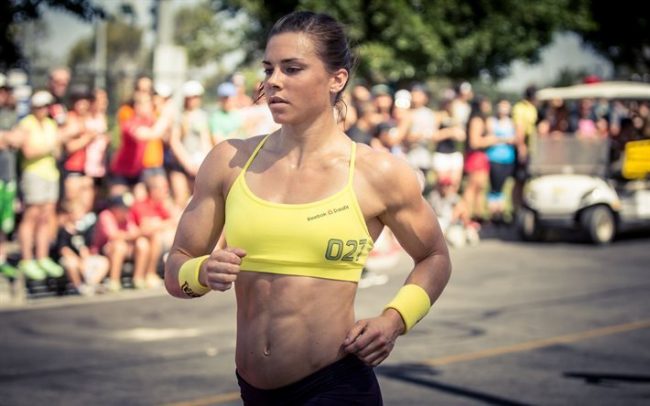
Carb Cycling vs The Keto Diet
People often confuse carb cycling with the keto diet, and vice versa.
But wait, aren’t they the same thing?
The keto diet, or ketogenic diet follows a weight loss regimen where you eat low carbs, high fat and moderate protein all throughout. Do this, and soon your body will adapt and be in a state of ‘ketosis’, where energy comes from fat reserves.
That’s it. Adding exercise programs will depend entirely on your preference, but overall the end goal should be to lose excess pounds. The keto diet does not fluctuate or deviate from its low-carb, mid-protein and high-fat plan, which means you could go to the gym and not change your meal plans.
Carb cycling, on the other hand, is flexible and depends on the day’s activities. It usually has a higher carb and lower fat intake compared to keto. On high carb days its limit is anywhere between 2 to 2.5g of carb per pound of weight, and on low carb days the number is .5 grams per pound of weight. So if you weigh 150 then the carb count will be limited to around 75 grams on low carb days and approximately 375 grams on high carb days.
Notice the difference so far? Keto has a strict guideline, while carb cycling follows your schedule. Keto’s low carb rule means you won’t have as much energy during training, while carb cycling ensures you’re supported with quick energy from start to finish. Both have roughly the same nutrient content during off days except for fat.
Carb cycling is more versatile as it also touches upon lean mass and muscle growth compared to keto.
Conclusion
By now, you will have learned what carb cycling is, the mechanics around it and how you could combine it with intermittent fasting and fasted cardio.
The benefits of carb cycling is many. The only downside is that it requires a bit more planning than the latest fad diets. Beginners may find it difficult to understand at first, but once they have the basics down pat then it’s just a matter of knowing when to eat low carb foods and when to switch to higher carb content.
In order to succeed at carb cycling, you’ll have to adjust your intake accordingly. Plus, you won’t have to worry about the usual pitfalls of diets because you won’t be shying away from a particular food type. This means you won’t likely go on overeating or gorging on a particular food just because you’ve gone on too long without it. Most of your favorite foods contain carbohydrates, after all.
Low carb days can be challenging, but they’re easier to tolerate because you know that there will be days where you can load up on your favorite food or try a new dish.
Carb cycling is definitely a good fit for endurance athletes and bodybuilders who are looking to achieve a certain performance or fitness goal. Those who want a structured weight loss program without the risks associated with cutting out a certain food type will find carb cycling much easier to digest.

Ryan is a former college wrestler and lifelong fitness fanatic with over 25 years in the industry. He’s run half marathons, tackled mud runs, placed in body transformation contests, and coached everything from wrestling to girls’ soccer.
Along the way, he’s tested hundreds of supplements and built a deep well of supplement knowledge. His work has appeared in Muscle & Strength, Testosterone Junkie, The Sport Review, and more. Today, he’s the editor-in-chief of this site, still training hard and helping others reach their goals. Connect with him on LinkedIn below.

